The Heat of the Moment
03/15/2022
Saint Louis University researchers find reasons to hope despite the climate crisis.
Dr. Jack Fishman teaches an undergraduate course about climate change every semester at Saint Louis University — and each time, he said it feels more urgent than ever.
“Last fall, in the first week of classes we were hearing about the unprecedented flooding in New Jersey from the remnants of Hurricane Ida that devastated Louisiana, the record wildfires in California, the hottest temperatures ever measured in both Oregon and Washington, and the prolonged drought throughout the western United States. All at once. Tens of millions affected,” he said. “So, yes, we talk about the climate as the crisis it is. Hopefully, the students become inspired to do something about it.”
There is no denying that the climate is in crisis. As a Jesuit university, SLU is in a unique position to illustrate that we have a moral obligation to do something about it.
Fishman (Grad A&S ’74, ’77), a professor of earth and atmospheric sciences, knew this as he coordinated the Saint Louis Climate Summit hosted by the University in 2018, a response to Pope Francis’ 2015 encyclical on climate change, Laudato Si’.
“At our Jesuit university, we recognize that what St. Ignatius called ‘the gifts of God’ are intended for all in our world,” said David J. Suwalsky, S.J. (Grad A&S ’89, ’10), SLU’s vice president for mission and identity. “It is a matter of justice above all, that all peoples have available to them these gifts — the most basic including clean air and water, and climate that nurtures possibility rather than disaster.”
Nurturing possibility rather than disaster — the five professors featured here do just that. By looking to the air and water, the food we eat, and the animals we share this planet with, these researchers are doing their part to make sure the gifts of God are not lost.
A Breath of Fresh Air

Dr. Benjamin de Foy was always into science.
In primary school in England, he designed an energy-efficient house for a school project, spurring his interest in the environment. And then there was his interest in computer programming.
“We had a Commodore 64 at home. I think a fair number of us in my generation started programming that way,” de Foy said.
Programming eventually led him to engineering, to Cambridge for a doctorate, and to Massachusetts for a job at an environmental consulting firm that wasn’t exactly the right fit.
“It was mostly working for industry,” he said. “But I wanted to be working more for the environment.”
De Foy moved on to the Massachusetts Institute of Technology, where he worked with Dr. Mario Molina, the Nobel Prize recipient who predicted the ozone hole, on the Mexico City Project. De Foy joined the project as a computer modeler, analyzing satellite data to illustrate the patterns of pollution that stemmed from urban areas and industrial complexes as well as an active volcano.
“With air pollution, everybody’s always trying to blame somebody else: Oh, it’s the volcano’s fault,” de Foy said. “But we clearly showed that the volcano was emitting very high up into the free atmosphere, where pollution just blows away, while this big petrochemical industrial complex emitted pollution straight into the city. Both are having an impact, but one is a bigger impact.”
Since joining the faculty in SLU’s Department of Earth and Atmospheric Sciences in 2006, de Foy has used data mining and computer modeling to study air pollution everywhere from St. Louis to Southeast Asia.
His most recent project is in collaboration with Duke University, analyzing data from Bangladesh, India, Nepal, Sri Lanka, Bhutan and the Maldives to eventually improve air quality and human health. The research team will monitor concentrations of particulate matter in the air, determine specific sources — such as traffic, fossil fuel combustion and industrial sources — and formulate a strategy to reduce pollution to healthier levels.
Because his work is performed essentially in front of a computer, de Foy doesn’t typically travel for projects — which meant he didn’t have to slow down much during the pandemic. In fact, he found himself analyzing the effects of everyone else slowing down.

“I have a project in Korea, and we looked at that when COVID shut everything down,” he said. “All of a sudden, everything changed; we could ask, what difference did that make? The circumstances set up a natural experiment to see before and after.”
The obvious reduction in pollution “reminded us that it’s nice to have good air,” de Foy said.
“But I don’t want people to think that atmospheric scientists would just like to close the economy down,” he continued. “Long-term actions have been shown to work and to be consistent with economic growth. Just look at the recovery of bald eagles in the wild following environmental controls going back to the 1970s.”
Overall, de Foy is hopeful about the environment.
“Air pollution science can reassure us that if we want to, we can work on climate change,” he said. “We’ve been dealing with air pollution for decades, and we have much, much cleaner air now. A better future is possible — we need to imagine that so we can work toward it.”
De Foy frequently gives public talks across the St. Louis region about his research and climate change, emphasizing the need for vision, personal action and societal change.
He also broaches the subject with his students. Last fall he taught a course about climate change to first-year students in the pilot program of the Ignite Seminar, which is part of the University’s new core curriculum. And although the subject can be polarizing, de Foy almost always finds his students very open to the science. He also reminds them exactly what’s at stake.
“I ask my students, ‘How often do you wake up in the morning and just say thank you for your first breath of fresh air?’” he said.
Testing the Waters
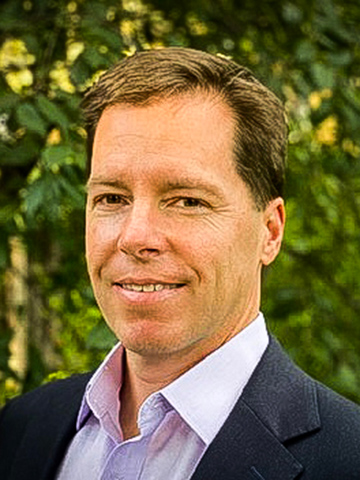
The fact is, human beings cannot survive without water.
And increasingly, worldwide, water is a problem.
According to the United Nations, about 4 billion people — nearly two-thirds of the global population — experience severe water scarcity at least one month a year. An estimated 700 million people worldwide could be displaced by water scarcity by 2030.
“It’s fundamentally important to society,” Dr. Jason Knouft said. “Everything on the planet — economic and social systems, natural resources, biodiversity — is dependent on water. These systems evolved with the expectation of a certain amount of water being available. Understanding how they’ll change in the future is critical to adapting to a changing climate.”
Knouft is a professor in SLU’s Department of Biology, and his research in the St. Louis region and across North America could have a serious ripple effect.
In a recent project funded by The Nature Conservancy, his team’s goal was to understand how climate change will affect the Meramec River watershed.
The Meramec, a tributary to the Mississippi River, is a popular spot for floating, fishing and swimming. But beyond recreation, the Meramec is an irreplaceable resource, providing drinking water for more than 200,000 people in the region. It is also, as Knouft put it, “a biodiversity hotspot,” with a greater number of freshwater species compared to almost any similarly sized river system in North America.
“We wanted to understand how climate change is going to influence how much water will be in the watershed, its temperature and how much sediment will be pushed into the river,” Knouft said.
As the climate changes, he explained, the region will experience more intense rainfall and flooding. That in turn will increase the amount of sediment — including nitrogen and phosphorus — that flows into the river, changing its chemical makeup.
The Nature Conservancy wanted to know if they could remediate that problem in a way that will have long-lasting benefits.
The simple answer: Plant trees.
Called “riparian buffers,” trees planted along the edge of the river will capture some of the sediment and contaminants running off the landscape. They’ll also shade the river and cool the water, an added benefit when it’s predicted that climate change could increase water temperature in the Meramec by about three degrees Celsius.

Knouft said the model developed by his team can be adapted for other projects.
“Several agencies, nongovernmental organizations and the state are interested in the model,” he said. “We’ve used it in Illinois to ask questions about agriculture and climate change.”
Knouft’s other recent undertaking has an even bigger scope. Funded by the National Science Foundation, it’s a biodiversity informatics project involving nearly every section of stream in almost every river system throughout the United States and Canada. The team, which included labs at Indiana and Tulane universities, examined and projected water volume and temperature from 1950 to 2099.
“You can see what the water quantity and temperature look like now in a given stream, and then how it will look in June 2050, for example,” Knouft said. “The idea is that ecologists, biodiversity scientists, natural resource managers, state and federal planners — whoever cares about water — should be able to use these data.”
Knouft used it to investigate the impact of dams on fish movement as climate changes, mostly on the East Coast of the United States, as well as biodiversity responses in Alabama. And although other applications are myriad, further research must wait.
On sabbatical this academic year, Knouft is working as an analyst for the U.S. State Department. Thanks to a Jefferson Science Fellowship, he’s advising the Office of the Geographer and Global Issues in the Bureau of Intelligence and Research about issues related to water and climate change.
This work harkens back to his belief that everything in society is tied to water. He said his students seem to understand this implicitly.
“Their concerns are all woven together: water scarcity, climate change, social equality, economics,” Knouft said. “Which is actually incredibly appropriate because you can’t tease apart climate change from social systems. We’re not going to be able to deal with it in a vacuum.”
The Root of the Matter
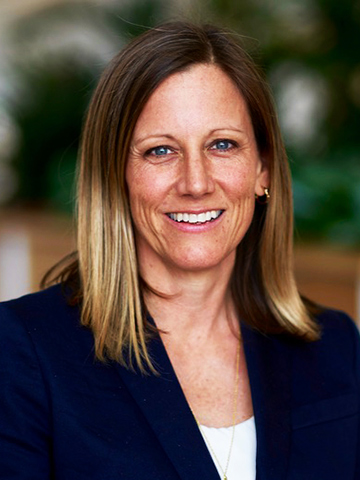
As the saying goes, you are what you eat.
Dr. Allison Miller wants what we eat to be sustaining not just for us, but also for the planet.
“Plants are the answer. My work is exploring plant diversity, understanding it and thinking about how it might be applied in agriculture,” she said. “My students hear me carry on about plants all the time.”
A professor of biology, Miller is on campus each week to teach. But her lab is off campus at the Donald Danforth Center for Plant Science in St. Louis County, where it’s been for the past four years (and where SLU undergraduate and graduate students take part in her research). Miller is in a joint faculty partnership, serving as a member and principal investigator at the Danforth Center in addition to her role at SLU. She does fieldwork across the region.
Her research is a direct response to the climate crisis.
“In the broadest sense, we’re thinking about agricultural systems that will be sustainable in our changing climate,” Miller said. “We recognize that we’re basically using all of the arable land we have, and that we have a rapidly growing population. We’re trying to think about what our food will look like, given these changing conditions.”
Miller’s research falls into two categories: One, improving existing crops for changing climates; and two, developing new crops for the agricultural systems of the future.
In the first category is the Vitis Underground project. In 2016, Miller was awarded a $4.6 million grant by the National Science Foundation to lead a multi-institution team of researchers in understanding how root systems of grapevines affect the rest of the plant.
Nearly all grapes grow on vines that are grafted, which means that the roots are genetically different from the top part of the plant.
Miller explained: “We collect data from the aboveground portion — from the leaves, the flowers, the fruits — and study how those traits change as a function of their root system.”
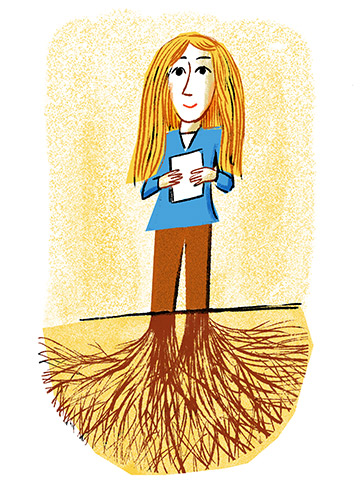
The goal is to develop perennial crops with superior robustness and plasticity, enabling them to thrive in a range of climates. In 2021, the team was awarded a oneyear, no-cost extension to continue the work.
“We’re never going to feed the world with grapevines, true,” she said. “But this is a model. What we learn with grapes is relevant for apples and oranges and walnuts and nectarines — anything that’s grafted and grows on a sort of woody vine.”
Miller describes the second category of her research as “reimagining major agricultural systems.”
A bit of background: Agriculture is the world’s largest and most rapidly expanding ecosystem in the world, and a major contributor to climate change. It’s estimated that half of the world’s topsoil has been lost in the last 150 years.
Miller wants to change that.
“Through their root systems, plants connect the atmosphere to the soil. If we can learn about specific attributes of the root system, their effects on the soil and their capacity to store greenhouse gases such as carbon dioxide, then we might be able to construct an agricultural system of species that make products that people can eat, that they can harvest mechanically, that work within our agricultural economy, but that provide regenerative ecosystem services as well,” she said.
So, what’s on the menu instead? One item might be Kernza, a perennial member of the wheatgrass family that’s been developed over the last couple of decades. Last fall, The Washington Post wrote about Kernza’s capacity to address climate change, and Whole Foods named it one of their top 10 food trends for 2022. Miller uses it in her research. Her family uses it in pancakes.
“We buy Kernza flour and substitute it in our recipes. It’s delicious,” she said. Some people make beer with it. But Miller is realistic about how hard change can be, especially with something as personal as food.
“It doesn’t have to be that every last wheat and corn plant is gone,” she said. “It just needs to be enough to start tipping the balance in favor of longer-term sustainability.”
Miller has partnered for years with a Kansas nonprofit called The Land Institute to work toward developing an agricultural system that mimics natural ecosystems, with perennial plants that grow side-by-side instead of in single-crop fields.
Similar research is being conducted as part of the Danforth Center’s New Roots for Restoration Biology Integration Institute, a collaboration between eight organizations. Miller developed the proposal to support this institute, and is now serving as the director of this five-year, $12.5 million initiative funded by the National Science Foundation.
She’s optimistic about what her team, her students and in fact any of us can do in facing the climate crisis.
“The climate is certainly changing, but there’s a lot that we can do to adapt our agricultural systems,” she said. “It’s exciting to be a part of this positive change.”
All Creatures, Large . . .
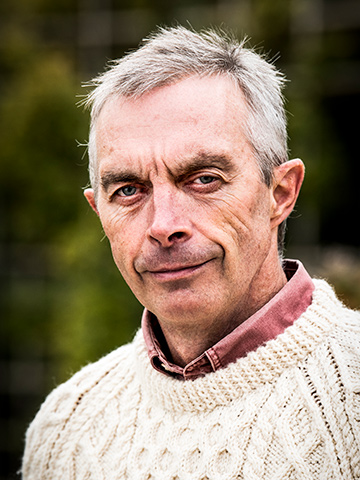
As he tells his story, Dr. Stephen Blake’s role as a researcher of mega-vertebrates was serendipitous.
“I didn’t want a normal job, and I like being outdoors,” he said. “After university, I wrote to a zoo and asked for a job, any job. ‘A window cleaner and path sweep — you want that?’ Fair enough. That morphed into becoming a gorilla keeper in England. Then they set up a gorilla protection project in Congo and asked me if I wanted to work there. One thing leads to another.”
In Blake’s case, gorillas led to elephants led to tortoises, with other species along the way. He describes his work as “muddy boots conservation and research” — studying movement ecology, how animals travel from one place to another and why.
Blake, an assistant professor of biology, refers to himself as “the oldest junior faculty at SLU,” having come to the University a few years ago after decades of work in the field.
He started in the Congo Basin working for the Wildlife Conservation Society, and ended up spending 17 years in central Africa doing conservation and applied research with elephants, which faced extinction due to poaching for the ivory trade. While there, he collected data on forest structure and species composition in the Nouabalé-Ndoki Forest.
He revisited that data set a few years ago, when a group of colleagues developed a computer model to investigate what happens to the forest over time as elephants forage (that is, browse on tree foliage). The findings revealed how elephants provide a crucial function to the health of the planet.
Forest elephants prefer fast-growing tree species. As they browse, they knock off tree limbs and break shrubs. The computer model simulated feeding and breakage rates along with elephant mortality rates to see their effect on certain woody plants.
The team found that as elephants eat on fast-growing tree species, they damage and kill young plants — which changes the composition of the forest toward slow-growing species. These trees have denser wood and, therefore, store more carbon per unit volume than fast-growing trees. Thus, the elephants enable the forest to sequester and store more carbon, keeping it out of the atmosphere. If forest elephants disappear, over time the forest will become dominated by fast-growing tree species, and its carbon-storage potential will drop.
“Forest elephants are forest gardeners that help maintain the extraordinary biodiversity of central African forests, but they are rapidly facing extinction,” Blake said. “From a climate perspective, all of their positive effect on carbon and their myriad other ecological roles will be lost.”
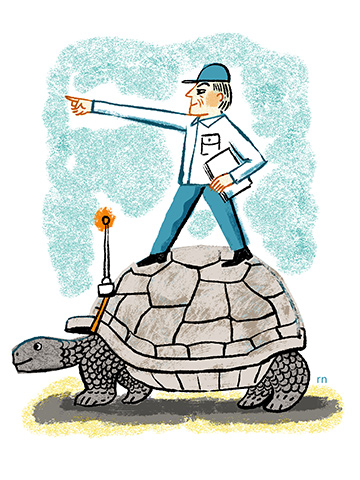
From the Congo, Blake moved to the Galapagos Islands and studied its famous tortoises.
“These are charismatic, globally known animals, but despite their fame, we don’t know much about their ecology,” Blake said.
This curiosity led to the founding of the Galapagos Tortoise Movement Ecology Program in 2009.
Initially, Blake and a group of migration biologists wanted to see if the giant tortoises migrate over long distances (they do) and then, why (the availability of food for foraging). Next, they wanted to find out if the tortoises would adjust migration in response to varying environmental conditions.
To date, more than 120 GPS devices have been fitted to track Galapagos tortoises. Before the pandemic, Blake returned to the islands every year. The research is ongoing.
Like forest elephants, the tortoises disperse the seeds of plants, both native to Galapagos and introduced species. Unfortunately, due to their long-distance seed-dispersal when migrating, tortoises may inadvertently be increasing the distribution of invasive species, particularly as climate change is increasing habitats suitable for these species. A warmer, wetter Galapagos in the future, coupled with tortoise gardening, may threaten native habitats.
“Seasonal climate stability drives many long-distance migrations. For various reasons, this is in global peril as we over-harvest migratory species, destroy habitat and change the climate,” Blake said. “That impacts the species’ evolutionary fitness: the reproductive potential, their body condition, their risk to disease. I initially wasn’t working with these species for climate change reasons, but inevitably they’re closely tied.”
Blake is involved with other research projects— one involving bison on the Dunn Ranch Prairie in northern Missouri; another a collaboration with the Forest Park Living Lab — but since joining SLU’s faculty, he’s spent most of his time teaching. He said he can be “a bit of a doom-and-gloom specialist.”
“To me, you can’t possibly teach introductory biology without bringing home the fact that biodiversity is in absolute tatters and is getting worse by the day,” he said.
“I try to convince all these pre-medical students to give up their med school goals and become planetary doctors instead,” he continued. “Because if we don’t get a handle on climate change and biodiversity loss, there won’t be anyone left to treat.”
… and Small
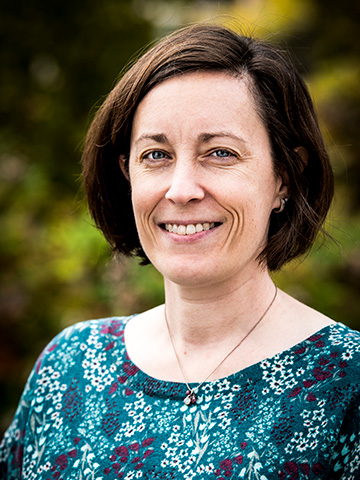
The average person probably thinks of insects as pests, swatting them away or trying to eliminate them altogether.
Not Dr. Kasey Fowler-Finn.
An associate professor of biology, Fowler-Finn finds insects to be an endless source of information about how organisms might adapt to climate change.
Insects provide the foundation for ecosystems: They pollinate crops, cycle nutrients through the soil, help control the populations of other organisms, and more. If rising temperatures affect a certain species, the entire ecosystem could suffer. We need to pay attention to them.
“Plus, they’re adorable!” Fowler-Finn said. She was speaking specifically about the treehopper, a half-centimeter-long insect and a subject of her research.
A few years ago, the National Science Foundation granted Fowler-Finn just over $640,000 to study how changing temperatures affect treehoppers’ mating behavior.
During mating season, male treehoppers serenade potential mates with “songs” sent as vibrations through plant stems. If a female treehopper likes what she hears, she hums back in reply, which starts a duet and leads to mating. But temperature changes can alter the ambience. At some temperatures, male treehoppers can sound like different species, which could confuse females.
“Their song is tied into muscle vibrations, and the hotter it is, the faster their muscles vibrate,” Fowler-Finn explained.
Her team wanted to know if female treehoppers, in turn, might change what songs they like best. The good news is that they do, according to the research.
“The conclusion is that with increasing temperatures, you’re not going to get a disruption of mating,” she said. “Females will still be able to identify the proper species and select males based off their song.”
But that’s not all.
“They’re actually pretty robust in terms of temperature change,” she said. “Both males and females seem to be active at hotter temperatures, which is good. And we found that when they develop at a hotter temperature, it increases their tolerance to the heat, which is important in terms of climate change and survival.”
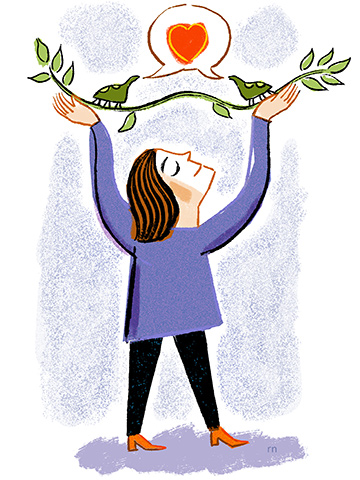
In addition to finding the treehoppers adorable and adaptable, Fowler-Finn appreciates hearing their music herself.
While working at a field station at the University of Virginia, she met sound artist Steven Vitiello who was there as an artist-in-residence. The two collaborated in 2015 on an exhibit that made plant-borne sound audible to humans. When Fowler-Finn applied for the grant that supports her lab’s current research, she wrote into the application that she wanted to collaborate with Vitiello again.
The result — an exhibit called “Too Hot To Sing” — demonstrated how global warming may influence communication in vibrational insects. It opened at the Saint Louis University Museum of Art in March 2020 and eventually went online due to the pandemic. (Listen at www.toohottosing.com.)
“It’s mind-blowing how beautiful their songs are,” she said. “It’s a nice way to get people interested in insects — and to show how insect song and communication are affected by climate change.”
Fowler-Finn isn’t just interested in the way insects sound, though; she also has studied the way they look.
In research published last summer, she had the opportunity to work on dragonflies. This project, led by Dr. Michael P. Moore of the Living Earth Collaborative, examined wing ornamentation in male dragonflies to see if it changed as the temperature rose.
“We found that the pigmentation of the males’ wings evolves really consistently in response to climate,” Fowler-Finn said. “It’s among the most predictable evolutionary response ever observed for a mating-related trait.”
As the climate warmed, the male dragonflies adapted by changing their melanin ornamentation, which absorbs solar radiation and can heat them above ambient temperatures. The new pigmentation made them appear less male than usual.
“However, females responded in a totally different way,” she said. “This shows that mating-related traits can be as important as survival-related traits to how organisms adapt to climate, but we also need to account for the fact that the sexes may have different solutions to the same problem.”
When she’s not in the lab, Fowler-Finn teaches evolutionary biology at both the undergraduate and graduate level. She has led more than 50 SLU undergraduates in hands-on research, through which many have co-authored scientific articles. She’s been at SLU since 2014, her first faculty position. It’s been a great fit for her.
“The Jesuit tradition is deeply rooted in the scientific process and discovery,” she said. “And SLU students are taught to think critically. They tend to be evidence-based thinkers, in my experience. And this makes working with them in the classroom and laboratory fun and productive.”
About Universitas
Universitas, the award-winning alumni magazine of Saint Louis University, is distributed to SLU alumni, parents and benefactors around the world. The magazine includes campus news, feature stories, alumni profiles and class notes, and has a circulation of 129,300.


















